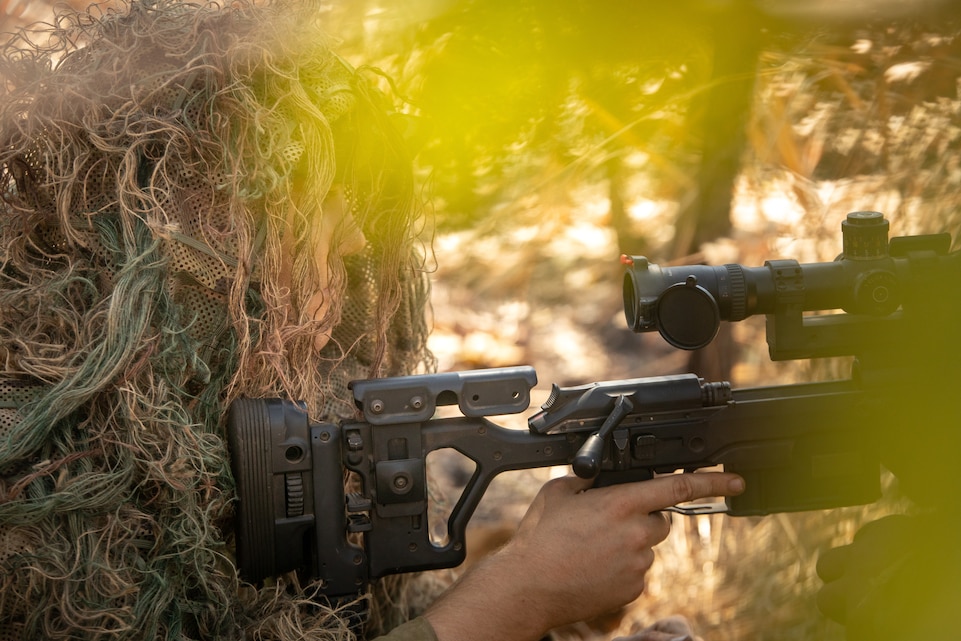
In the heart of the Australian Outback, U.S. Marines, Australian Army soldiers, and Japan Ground Self-Defense Force soldiers assembled and successfully conducted Exercise Southern Jackaroo.
The trilateral exercise, held over a two-week period, was a tangible demonstration of multinational interoperability, where the forces worked through logistical and cultural challenges that tested the ability of each of the militaries to mutually support one another.
The exercise began with an opening ceremony at Robertson Barracks, home of the Australian Army’s 1st Brigade, where commanders addressed a formation of Australian, Japanese, and U.S. troops. There, they spoke on themes of enhanced cooperation between each force and the importance of building deep, personal and professional relationships with one another.
To overcome communication barriers, the force integrated teams of military interpreters throughout the formations in order to best facilitate understanding amongst each other.
“We built a multi-rank team of interpreters, drawn from the Australian Army Defence and Japan Ground Self-Defense Force, which meant we bridged the gap from the lowest ranks up to the command group to communicate each other’s intent,” said Australian Army Capt. David Ferwerda, Japanese liaison officer, Headquarters 1st Brigade.
Training commenced with urban breaching operations at the Urban Operations Training Facility on Mount Bundey Training Area, where all three forces demonstrated to one another their tactics, techniques and procedures for maneuvering through urban terrain. Leaders frequently reviewed the patrols and breaches to learn from one another and, if required, integrate squads in future operations.
Simultaneously, U.S. cannoneers from Mike Battery, 1st Battalion, 7th Marine Regiment (Reinforced) and the Australian 103rd Battery, 8th/12th Regiment, Royal Australian Artillery, established a combined gun line of six total M777 Howitzers, where they participated in fire missions together, directed by U.S. and Australian Fire Support Coordination Centers.
“Exercise Southern Jackaroo has well prepared us for that future challenge.” Australian Army Brig. Ash Collingburn, 1st Brigade commander
“The time and effort that we and our Australian friends invested during this exercise, and will continue to invest to advance interoperability between one other, demonstrates the strength of our alliance,” said the MRF-D Command Element fires officer, Capt. Eric vanHorn.
“Coordinating fires came easy to us because of a shared purpose, built upon a long history of partnership for more than a century.”
To conclude the first week of training, troops from all three militaries met at a combined marksmanship range, where snipers demonstrated advanced shooting techniques to engage targets at maximum effective range. Japan Ground Self-Defense Force Col. Kosyo Mizoguchi, commanding officer, 50th Infantry Regiment, commented on the unique opportunities training centers in the Outback had for the Japanese.
“It is very meaningful because Australia has very broad training areas, so we can conduct long range shooting,” he said.
“Training between Japanese, Australian, and U.S. forces is very important to us.”
The significance of the exercise was reinforced by the Australian Chief of the Defence Force, Gen. Angus Campbell, who visited Exercise Southern Jackaroo in its first week. There, he spoke to formations of Australian, Japanese, and U.S. troops about the importance of military service, tough training, and building relationships during the unique training opportunity.
“The whole point of exercises like these is to build interoperability and friendship,” said Gen. Campbell.
“If you can work and train together here, on this challenging piece of land, you can do it anywhere.”
In the second week of training, all three militaries came together in a culminating live fire event, where direct and indirect fire assets supported ground troops while assaulting multiple objectives. During the event, weapons teams fired 400 mortars, 250 rounds of artillery, and thousands of rounds of machine gun ammunition. Most notably, troops fired four FGM-148 Javelins—an anti-armor, man-portable, guided missile—at simulated enemy targets, as a powerful display of interoperability in support of maneuvering ground forces.
During the assault, all three militaries seized objectives throughout Mount Bundey Training Area, enabling one another to move forward on their mission and demonstrate the ability to command and control fires and maneuver. Although a challenging feat, the training in the week prior allowed the forces from the three nations to confidently perform this complex event in concerted synchronization.
“We’ve integrated indirect fire, fire support coordination, various types of heavy weapons, aviation fire support; any one of those things just with your own unit would be complicated,” noted MRF-D commanding officer, Col. David Banning, at the conclusion of the exercise.
After the final event, troops gathered for a closing ceremony, where soldiers and Marines from myriad different backgrounds said their goodbyes, and the three commanders expressed their gratitude for successfully executing such an intricate series of events.
“I look at all of you, shoulder-to-shoulder, and know that you stand ready for what challenges lie ahead,” said Australian Army Brig. Ash Collingburn, commander, 1st Brigade.
“Exercise Southern Jackaroo has well prepared us for that future challenge.”
"complete" - Google News
June 26, 2021 at 12:19AM
https://ift.tt/3h8YgSv
U.S., Australian, Japanese militaries complete Exercise Southern Jackaroo - Marines.mil
"complete" - Google News
https://ift.tt/2Fvz4Dj
https://ift.tt/2YviVIP

No comments:
Post a Comment